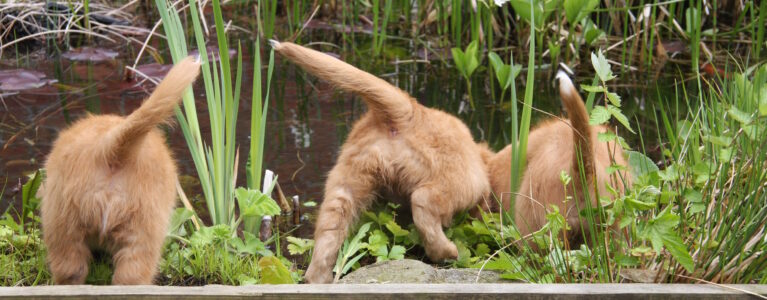
As a breed club, you can use a ZooEasy database to store all information about your breed in one place. This includes information about pedigrees, health, show and working results, as well as inbreeding and kinship.
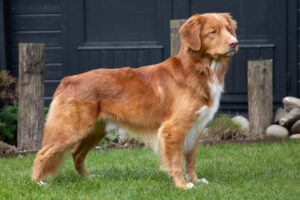 Coefficient of inbreeding
Coefficient of inbreeding
ZooEasy allows you to easily calculate the coefficient of inbreeding (COI) of an animal – in this case a dog or future puppy. These calculations are performed based on the pedigree data available in the database. However, nowadays it is also possible to determine a COI based on DNA research. This gives you an even clearer picture.
It has recently become possible for Dutch breed associations to obtain these COI at the DNA level. Van Haeringen Laboratory (VHL) tests the DNA of all Dutch pedigree dogs for the Dutch kennel club (Raad van Beheer). The purpose of this test is to determine the parentage of all pedigree puppies. As part of this DNA test, the COI of these dogs are also determined. Breed associations that are members of the Raad van Beheer can enter into an agreement with the Raad and VHL, to receive these COI. And of course, this data can then be recorded in the association’s ZooEasy database.
DNA COI of the NSDTRCN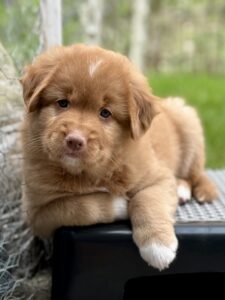
The Nova Scotia Duck Tolling Retriever Club Netherlands (NSDTRCN) has taken advantage of the above opportunity. Barbara and Esther of the NSDTRCN tell us how this process went for them:
“In December 2024 we went on a company visit to CombiBreed/VHL (Combibreed is a brand of Van Haeringen Laboratory). Prior to that visit, we had learned through a board member of another breed association we are friendly with that CombiBreed can calculate the COI and Heterozygosity (genetic diversity) of dogs. They do this using the DNA samples that they receive from the Raad van Beheer for DNA parentage verification.
During the visit to VHL, we inquired about this and received an explanation. As board members we then decided that we would like to receive this data.We would like to share with our club members how our population is doing.
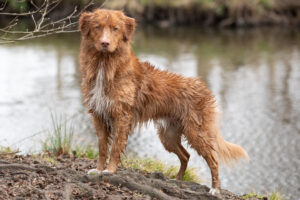 Inbreeding and diversity
Inbreeding and diversity
A healthy population is based on maintaining sufficient genetic diversity. Therefore we would like to have a high heterozygosity, while at the same time controlling and keeping the COI of offspring low. A low COI is important to minimize the negative effects of inbreeding. And a higher value for genetic diversity facilitates a well-functioning immune system, for example. COI and heterozygosity are related; the higher the COI, the lower the heterozygosity. And the lower the heterozygosity, the higher the COI.
Dogs that have high COI themselves can still have offspring with low COI and high diversity. In fact, inbreeding itself is not hereditary; what matters is how the male and female dog are related. If male and female both have a low COI but are related, pups will have a higher COI. And vice versa, if the male and/or female has or have a high COI themselves, as a combination they can still have pups with a low COI. As long as the male and female are not related to each other. With the COI and heterozygosity values we can get more insight into how our breeding policy works out in practice. This way we will know if we indeed see COI going down and heterozygosity going up.
Received before Christmas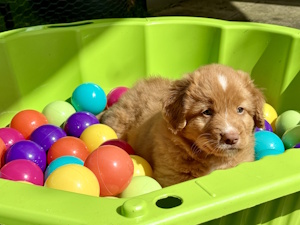
Once we made the decision that we would like to have the data, we initiated the process for this. This went very well and very smoothly. After our visit to VHL, we sent an email to the Dutch kennel club Raad van Beheer. Within three days of visiting VHL, we had received, signed, and already returned the agreement from the Raad. Through VHL we received the invoice for the data, and before Christmas we had received the COI and heterozygosity information.
We received the information as a large excel file containing the COI and heterozygosity of over 1500 dogs. In order to process the data properly, we wanted to have it imported into our ZooEasy database. For this purpose, we created two extra fields in our ZooEasy database, following the example of a befriended breed club. We then contacted ZooEasy to ask if they could import the data for us.That was no problem. We sent the excel file to them, and for a small fee our file was then converted and imported into our database. By mid-March we had all the data in there.
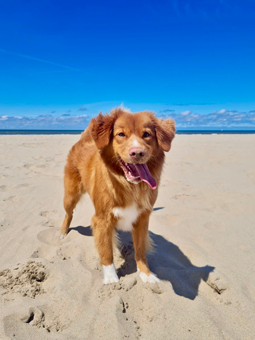 More insight into the population
More insight into the population
With this data, we hope to gain more insight. If genetic diversity is high, it is good for the breed as a whole. If inbreeding is low, it is also good. The relationship between the two is complex and it is important to find a balance between genetic diversity and inbreeding. As a breed club we feel it is important to have an understanding of this for our population.
For now, our ZooEasy database is only accessible to our breed club volunteers. But when we go live with ZooEasy soon and our breeding members have an account, they will also be able to view the COI information we received from VHL.This makes sense for breeders because it allows them to gain more insight into their breeding program. They can get an idea of how their pups score on inbreeding and diversity.
Unfortunately, the COI of VHL and for instance Embark are not comparable to each other. This is because these two laboratories both use a slightly different DNA profile and a different method of calculation. But because VHL will be in possession of the DNA profiles for parentage verification of all Dutch Tollers through the Raad van Beheer, this COI will be visible in our database for more and more Tollers in the future.
Valuable information on all Tollers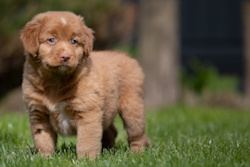
We experienced this whole process of receiving the information very positively. From sparring with befriended breed associations to visiting CombiBreed/VHL, the business part via the Raad van Beheer, and finally obtaining the COI and heterozygosity calculation and importing this into ZooEasy. The process went smoothly and we imported all the data in one place in an orderly fashion.
We have now received the data of all Dutch Tollers born between November 2021 until approximately October 2024. But we would also like to continue receiving the data of Tollers born since then, and continue adding them to our ZooEasy database. Apart from the usefulness for breeders, these COI give a picture of the entire population, of the total number of NSDTRs bred in the Netherlands for which a pedigree has been requested. That is very valuable for us as a breed association.”